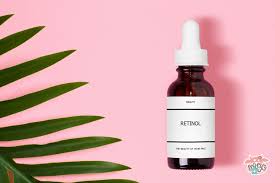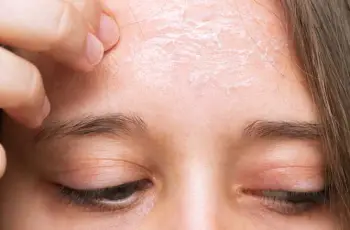
Can You Use Retinol After Epilation? Here’s What You Should Know
If you’re a regular waxer or use an epilator, you might not have considered how this affects your skincare routine—especially if retinol is part of it.
While both hair removal and retinol provide beauty benefits, using them too close together can backfire on your skin.
Retinol, a vitamin A derivative, offers amazing skin improvements. It reduces wrinkles, fades dark spots, and boosts collagen. But using it right after waxing or epilation?
That can lead to redness, irritation, or worse—an allergic skin reaction.
In this article, we’ll break down the do’s and don’ts of using retinol after epilation.
We’ll explain how both processes affect your skin and how to combine them safely for smoother, healthier results—without any painful surprises.
What Does Retinol Actually Do?
Retinol increases your skin’s natural cell turnover. This means it helps remove older skin cells and encourages new ones to surface faster. Over time, this makes your skin appear fresher, brighter, and smoother.
Retinol also stimulates collagen production. Collagen is the protein responsible for firm, youthful skin. As collagen production increases, your skin becomes tighter and fine lines reduce.
It also helps to unclog pores and treat acne. For many people, it’s a must-have skincare ingredient.
But there’s a catch: it can also make skin more sensitive and prone to irritation, especially when combined with other exfoliating or abrasive treatments.
What Happens to Skin During Epilation or Waxing?
Hair removal methods like waxing or epilation don’t just remove hair—they also strip away dead skin cells from the surface. In a way, waxing functions as a physical exfoliant.
This process leaves your skin temporarily sensitive. It may be slightly inflamed, red, or even feel raw—especially in delicate areas like the face.
Your skin is more vulnerable, and applying active ingredients like retinol too soon can cause burning or severe irritation.
That’s why combining waxing and retinol without caution can be a painful mistake.
Is It Safe to Use Retinol After Waxing or Epilation?
Not really. It’s generally not recommended to apply retinol right after waxing or epilation. Since your skin is already in a delicate state, adding a potent active like retinol can make things worse.
You risk redness, burning, itchiness, rashes, and even skin peeling. Even if your skin is used to retinol, freshly waxed skin is too fragile for it.
The safest approach is to stop using retinol about 7 days before your waxing session and to avoid it for 72 hours after.
This allows your skin to recover and rebuild its barrier before facing the potency of retinol again.
What Should You Do After Waxing If You Use Retinol?
After waxing or epilation, switch to calming and hydrating products for a few days. Here’s a simple post-wax skincare routine to follow:
Stop using retinol for at least 7 days before waxing.
Avoid all actives, including acids and vitamin C, for 3 days after waxing.
Apply a soothing cream after waxing, such as one with aloe vera or chamomile.
Use antiseptic cream or ointment to avoid infections in case of raw skin.
Hydrate with hyaluronic acid to boost skin recovery without irritation.
Use SPF 30+ daily, especially after facial waxing, even on cloudy days.
These steps will calm the skin, reduce inflammation, and prep your skin for safe retinol use again later.
Why Should You Avoid Retinol Before Waxing?
Even though retinol doesn’t technically exfoliate, it speeds up the natural turnover of skin cells. This means new, sensitive skin cells reach the surface more quickly.
When you wax or epilate, you’re not just removing hair—you’re also taking off a thin layer of dead skin cells. That dead layer serves as protection for the new skin underneath.
If you’ve been using retinol, that layer is thinner, leaving new skin exposed.
This is why waxing while on retinol can lead to burns, scabbing, or surface wounds—even if you’ve waxed before without problems.
How Long Should You Stop Using Retinol Before Waxing?
It’s safest to stop using retinol at least 7 days before you plan to wax or use an epilator. This gives your skin enough time to restore its natural protective layer.
It’s even more important if you’ve been using prescription-strength retinoids like tretinoin (Retin-A). These are more potent than over-the-counter retinol and require more caution.
Can You Use Retinol Before Laser Hair Removal?
No, using retinol before laser hair removal is also a bad idea. Like waxing, laser treatments can damage freshly resurfaced or sensitive skin.
Retinol thins the outer layer of your skin by accelerating skin turnover. This makes it more susceptible to laser burns and post-treatment hyperpigmentation.
Avoid retinol 7–10 days before your laser session and at least 5 days after, unless advised otherwise by a dermatologist.
What Should You Avoid Before Waxing Your Face?
Here are the key “don’ts” to remember before waxing your face:
Don’t tan or use sunbeds 24–48 hours before waxing.
Don’t exfoliate for 48 hours before waxing to avoid over-sensitizing skin.
Don’t use retinol, AHAs, BHAs, or vitamin C for at least a week before.
Don’t wear makeup or skincare products when waxing—clean, bare skin is best.
Don’t take hot showers, visit saunas or steam rooms right before or after waxing.
Don’t scratch the waxed area, even if it’s itchy—this increases risk of infection.
These steps will help reduce sensitivity, prevent irritation, and promote smoother results.
Can You Ever Combine Retinol and Waxing?
Yes—but timing is key. Many people use both in their skincare routines successfully, but you need to space them out. Here’s how to do it safely:
Stop retinol 7 days before waxing.
Wait 72 hours after waxing before reintroducing retinol.
Use soothing and hydrating products in the meantime.
Apply retinol only on fully healed, non-irritated skin.
When done correctly, you’ll get the skin-smoothing benefits of waxing and the anti-aging effects of retinol—without harming your skin in the process.
Final Tips for Retinol and Hair Removal
Always patch test new products, especially when combining actives with waxing or epilation.
Start slow with retinol, especially if you’ve recently waxed or used an epilator.
Moisturize consistently, as hydration helps your skin recover faster.
Use sunscreen every day, especially on areas that have been waxed and treated with retinol.
In Summary: Can You Use Retinol After Epilation?
Not immediately. Epilation and waxing cause temporary trauma to the skin. Adding retinol too soon after increases the risk of irritation, redness, and burns.
To protect your skin, stop using retinol 7 days before waxing and wait 72 hours after before reintroducing it. Focus on gentle hydration and sun protection in between.
When used carefully and with the right timing, both hair removal and retinol can coexist beautifully in your routine. Just give your skin time to recover between treatments.
If you have more skincare questions or need help customizing your routine, follow us on Instagram—we’re always in the DMs to help!


